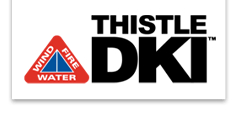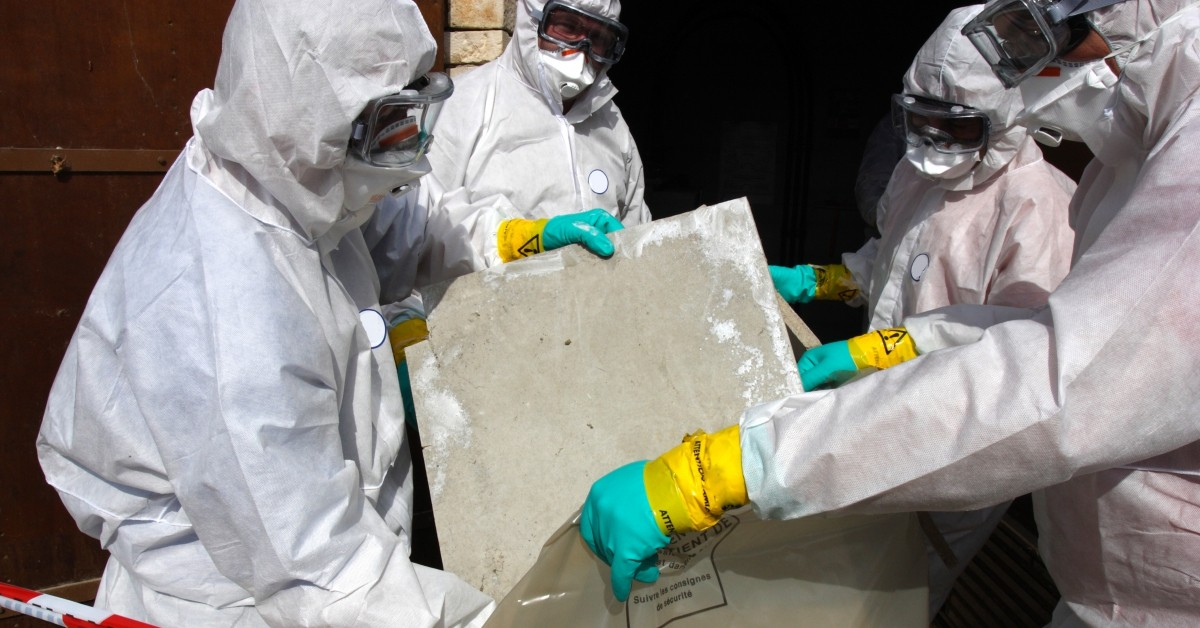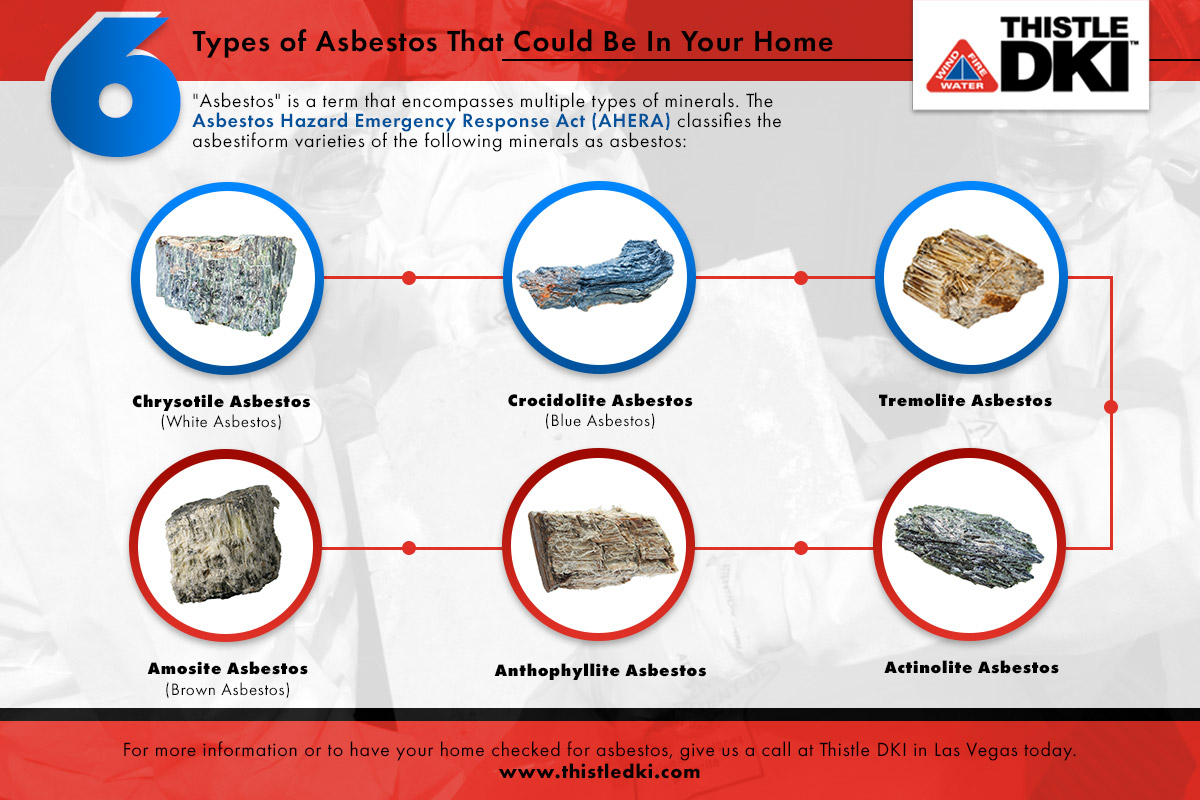The Asbestos Hazard Emergency Response Act (AHERA) has classified six types of asbestos varieties, including:
1. Chrysotile (White Asbestos)
This is the most commonly used type of asbestos that can be found in roofs ceilings, walls, and floors of homes and businesses. Manufacturers use chrysotile asbestos in products such as:
- Brake pads
- Adhesives
- Cement
- Drywall
- Fireproofing
- Roofing
- Gaskets
- Insolation
2. Amosite (Brown Asbestos)
Amosite was used most often in cement sheets and piping insulation, although it can also be found in insulating board, thermal insulation products, and ceiling tiles. According to the American Cancer Society, exposure to this type of asbestos creates a higher risk of cancer in comparison with common chrysotile asbestos.
3. Crocidolite Asbestos
Crocidolite is composed of extremely thin fibers that cause them to lodge more easily in lung tissue, making them responsible for potentially the most deaths than any other type of asbestos. The most common mining sites for this kind of asbestos were in South Africa, Australia, and Bolivia. Some common products that contain crocidolite asbestos include:
- Insulation
- Cigarette filters
- Cement sheets
- Acid storage battery casings
- Ceiling tiles
4. Anthophyllite Asbestos
Anthophyllite asbestos, one of the rarest types of asbestos, does not have a long history of commercial use. Mining of this mineral began in Finland and smaller deposits of it were mined in several other countries around the globe.
5. Tremolite Asbestos
Tremolite asbestos can be woven into fabric and is commonly known for its heat-resistant properties. This type of asbestos has sharp fibers that can easily be inhaled or ingested and is responsible for many cases of asbestos-related cancer and diseases. Tremolite ranges in color from dark green to milky white and is found in other minerals such as vermiculite and talc. It was previously used in a wide variety of products including paint, insulation, sealants, roofing, and plumbing materials, but for good reason is no longer mined.
6. Actinolite Asbestos
This type of asbestos is typically darker in color and has sharp, needle-like fibers that can be easily inhaled when airborne. Actinolite is made up of several other minerals including calcium, magnesium, iron, and silicon, and was previously used in products such as cement, insulation materials, paints, drywall, and sealants.


